




By arranging the flowers in water with the dye, the flowers themselves are colored naturally,
using their power to absorb the water.
You can mix any of the dyes to make your own original color.
The shorter the stem, the faster they are dyed.
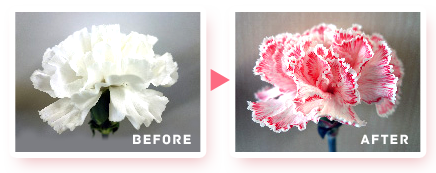

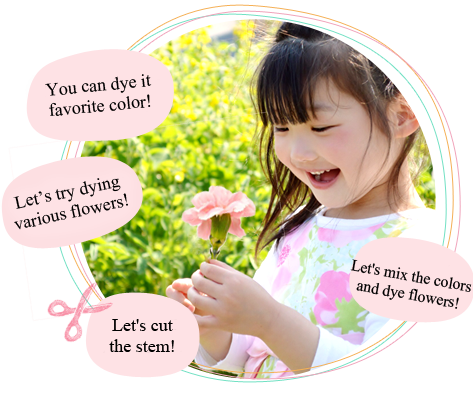
Different results for different types of flower.
Try different flowers and record how they are dyed!

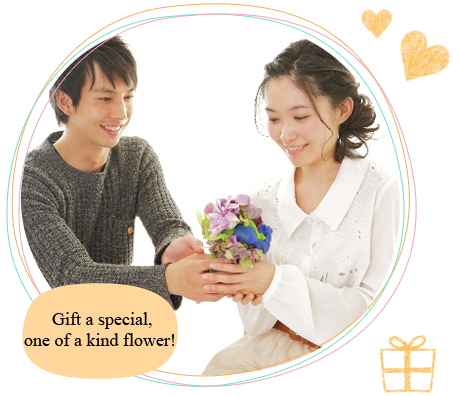
Gift flowers dyed in your own
original color!
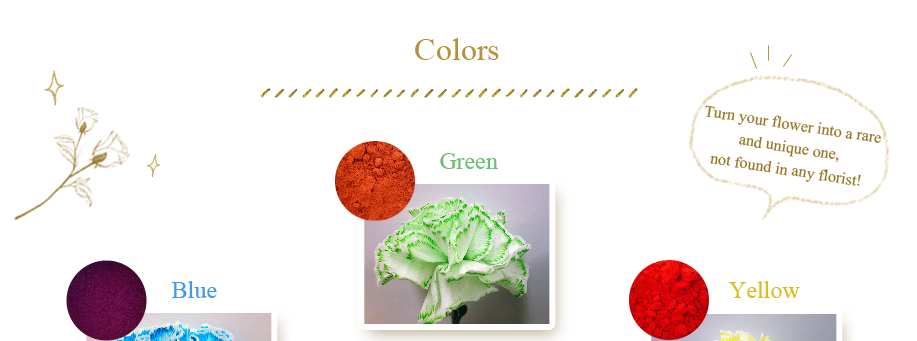
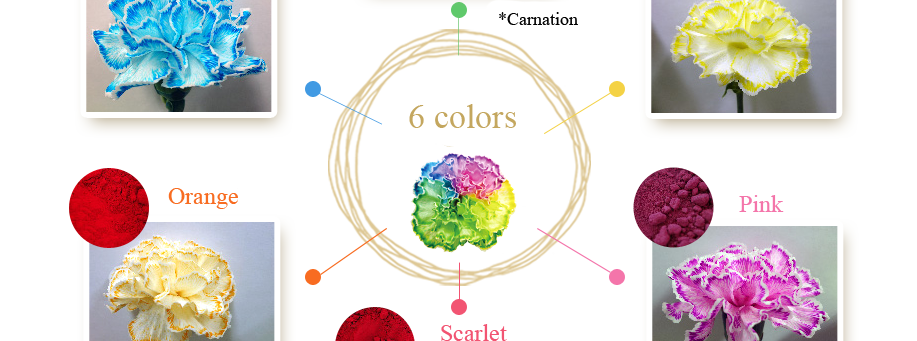
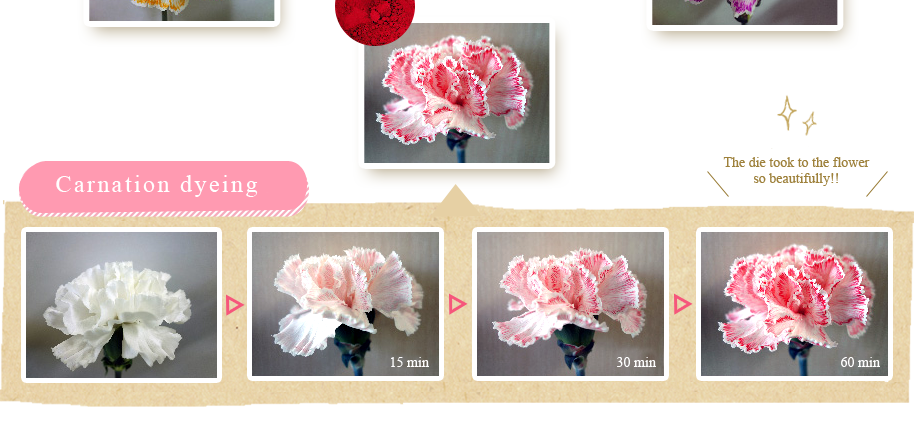

carnation, gypsophila, tulip, gerbera, daffodil, moth orchids , rose, sweet pea, etc.
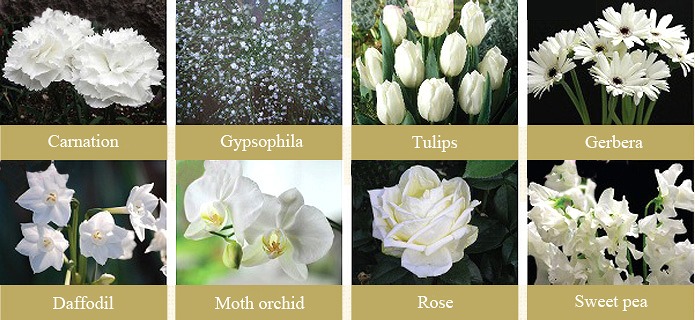


Cut the flower stem diagonally.
For best results to make the flower length around 30-35cm.
By cutting the stem diagonally the area to absorb water from the stem increases.
Prepare tap water in a bucket or cup, and put the flowers into the water.
When you buy flowers, they may need more time to fully bloom. It's best to wait for around a day.
Put 1 bag of your chosen color into 400-500ml of water and stir well so the dye dissolves into the water.
Soak the stems in the dyed water until the petals become the desired color.

花The dyeing time varies depending on the type of flower.If the dyeing time is too long, the life of the flower may shortened.
The staining time is at most about 6 hours. Then transfer to regular water and wait until the next day.
The next day, the whole flower will have adopted the new color.


